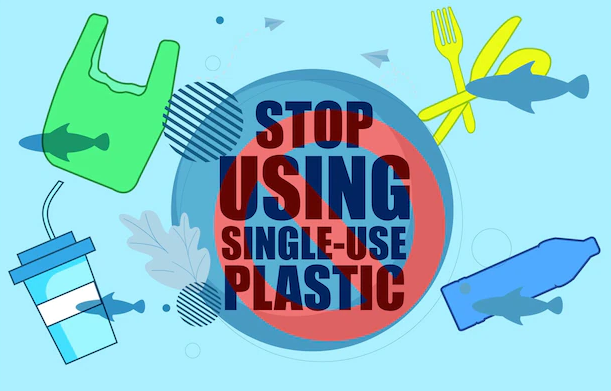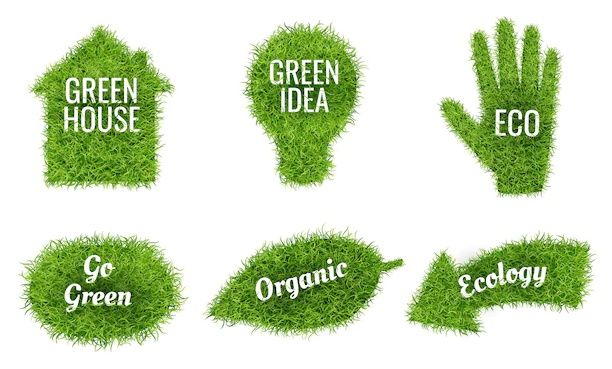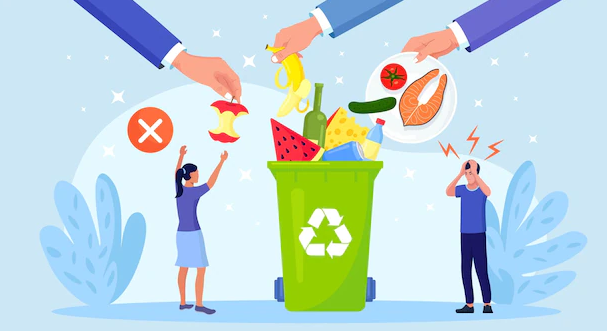We all want a clean and green environment, but many of us don’t know where to start. The truth is that every one of us can make a slight difference in reducing our carbon footprint. If we all work together, we can create a better world for ourselves and future generations.
In this post, we will give you ten practical tips on how you can reduce your carbon footprint. Let’s get started:

Image by Freepik.com
1. Stop Using Disposable Products
When you go shopping, try to avoid buying items packaged in plastic. Things such as water bottles and household supplies often come with a lot of unnecessary wrapping.
Try going for the bigger bottle instead of individual servings, or even better-skip bottled water entirely! If your city has a tap water system, then take full advantage of it.
2. Unplug Your Electronics
Many of us leave electronics plugged in even when they are not in use. As a result, we end up using more electricity than necessary. To reduce your carbon footprint, try to cut down on the amount of electricity you use.
Try going a day without turning on any plugged appliance, and see how much you can save!
3. Make Your Own Cleaning Product
Most cleaning products come with many unnecessary chemicals that can be harmful to the environment if not disposed of properly. To avoid this problem, try making your own environmentally friendly cleaners.
All you need is a little baking soda, vinegar, and warm water. There are many easy recipes online. You could even start your own business and sell it locally!
4. Go for a Greener Home

Image by Freepik.com
When looking for a new place to live, sustainable real estate is the way to go. Not only will it cost less to maintain, but it will also help your community become greener.
Try to find sustainable housing that has solar panels, is powered by wind energy, or even recycles rainwater. Ask your agent about sustainable housing in your area today.
5. Conserve Water
You can save hundreds of liters of water per year by turning off the tap when brushing your teeth or washing your face.
Fixing drips and leaks, making sure toilets are thoroughly flushed, taking shorter showers, reusing dishwater to clean other items, using a glass when running water is unnecessary, and checking for leaks in pipes or hoses.
You can also collect rainwater to use during dry periods.
6. Plant Trees
Planting trees is one of the easiest ways to reduce carbon emissions, cool the planet, absorb rainfall, provide sustainable resources like wood, fruits, nuts, and sustainable animal habitats.
It has been estimated that one single tree can absorb as much as 48 pounds of carbon dioxide per year. You could plant a tree in your local park and watch it grow to encourage sustainable living.
7. Bike or Walk Whenever Possible
Instead of driving to work or school, try biking or walking. This is a great way to stay cool and healthy in the summer. If you live too far from your destination, try carpooling with colleagues or classmates.
You can also rent a car if necessary-just avoid owning one yourself unless it’s absolutely necessary.
8. Buy Used
Buying new products requires energy for production, transportation, and sometimes waste disposal. Try buying used items whenever possible to help reduce the demand for sustainable resources!
You can find used furniture, clothes, and all kinds of household items that are still in good condition. There are even online classifieds where you can find sustainable transportation, sustainable housing, sustainable electronics-the list goes on!
9. Reduce Waste

Image by Freepik.com
When shopping, try bringing your own cloth bag or container instead of using plastic bags. If you are throwing out organic material like fruit peels or eggshells, make sure it is in a compost bin to biodegrade naturally with other organic materials.
You can also recycle most household items by checking the bottom for a recycling symbol-look for one of these symbols, which indicates what kind of recyclable it is.
10. Turn Off the Lights
Finally, one of the easiest ways to reduce your carbon footprint is by turning off the lights when you leave a room. Try going a day without switching on a light-it will be challenging at first, but you’ll soon get used to it.
Also, remember that fluorescent bulbs use less energy than standard ones, so try replacing any burnt-out bulbs.
If we make sustainable living practices part of our daily lives, we can significantly impact the environment. Hopefully, these tips will help you in some way.

Be the first to comment on "Sustainable Living: 10 Tips for Reducing Your Carbon Footprint"